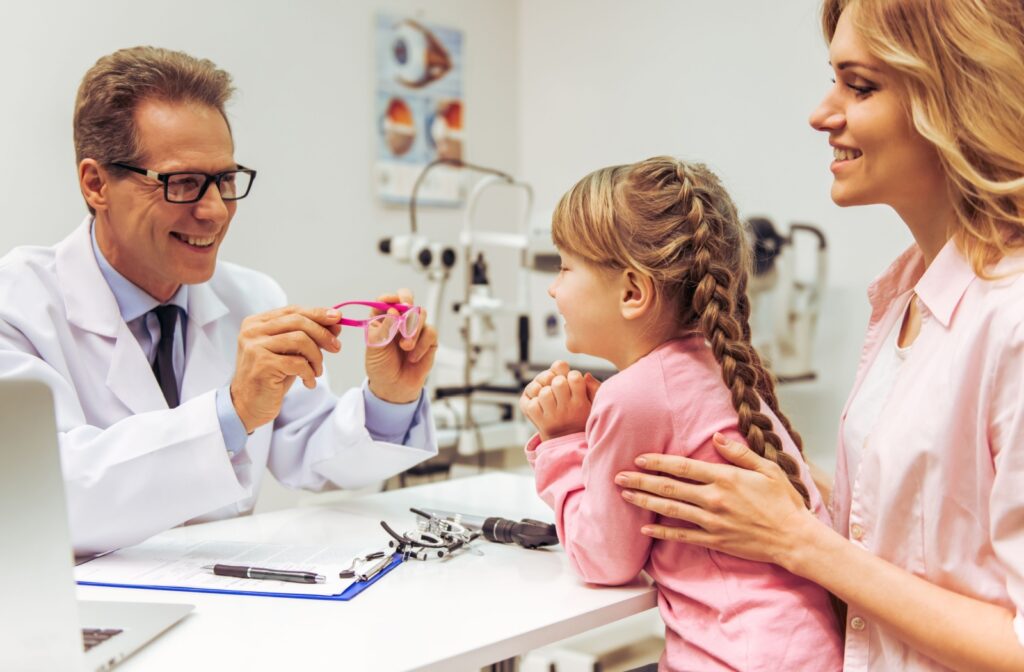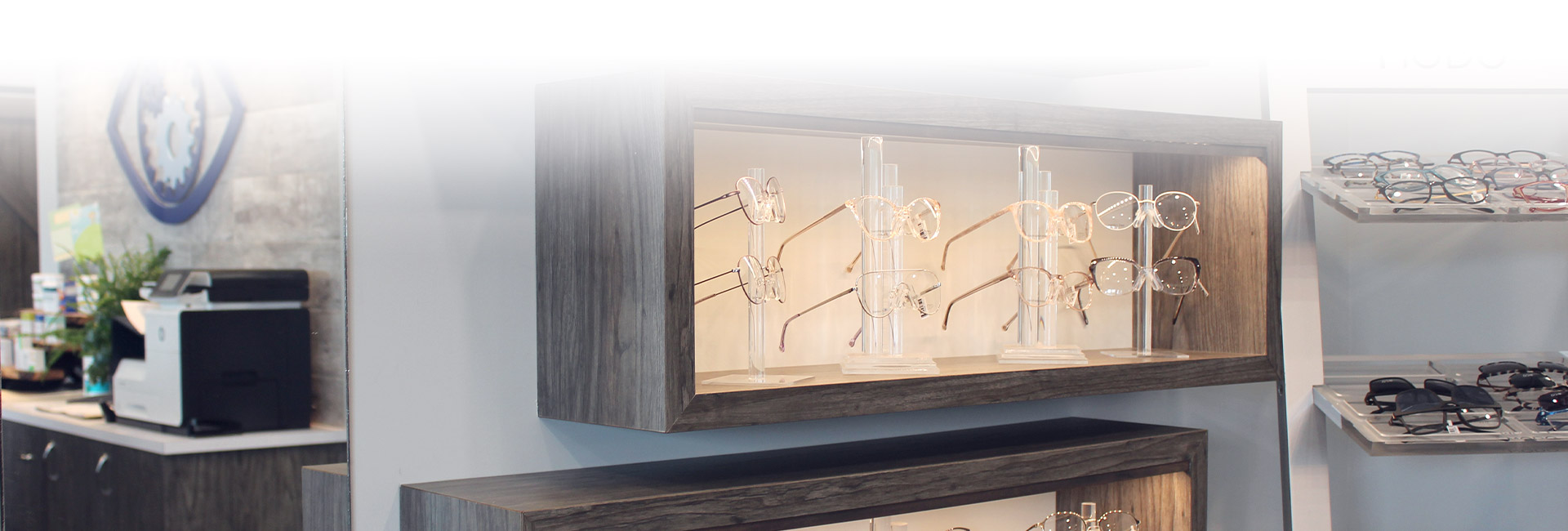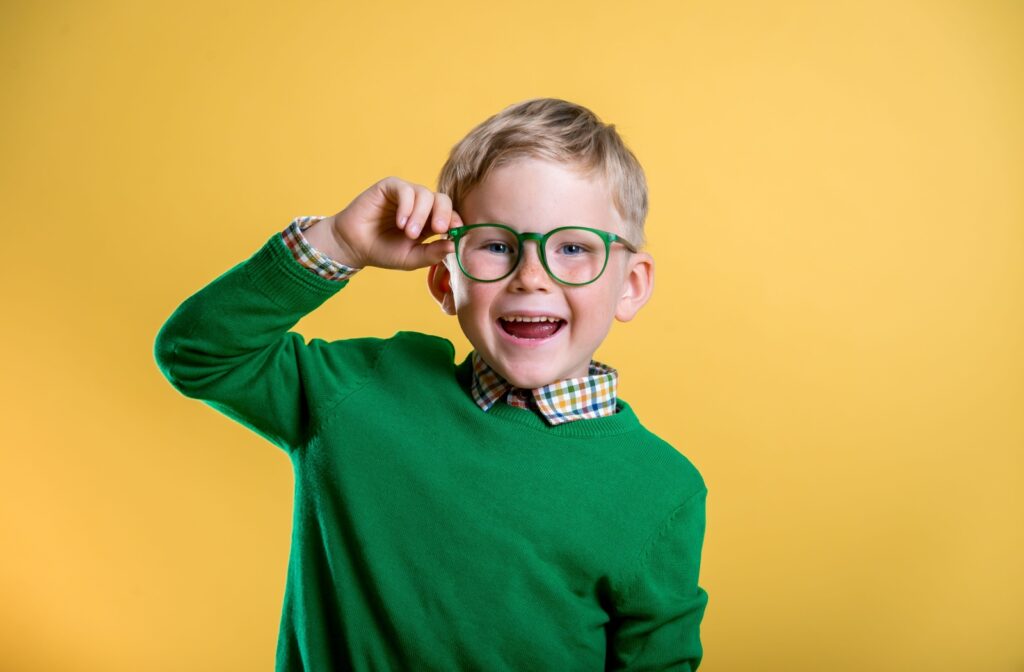Nearsightedness is a growing problem worldwide, and myopia control is an important solution to consider for your child. Although being nearsighted may not seem concerning when your child only needs light vision correction, myopia is known to progress, gradually worsening eyesight and increasing the risk of developing other serious eye conditions during adulthood.
Myopia cannot be reversed, and it has no cure. However, it is possible to take proactive measures to slow its progression, thereby preventing the risks associated with high myopia.
Without intervention, myopia tends to get worse with age. The underlying cause of that worsening vision is the continued growth—and often elongation—of the eye. Myopia control involves a series of treatments that target the stimulation of eye growth, slowing and stabilizing it to preserve your child’s vision.
Often, the earlier a child starts myopia control, the better the outcome. Staying on top of your children’s vision and eye health through annual, routine eye exams is an effective way to identify concerns like myopia early and get started with proper intervention before it progresses further.
A Closer Look at Myopia
Myopia (nearsightedness) is an eye condition that affects how incoming light focuses on the retina. An eye affected by myopia is longer or the surface is more curved, and therefore, when light enters the eye, it focuses in front of the retina instead of on it. That results in blurry distance vision while close-up images remain clear.
Myopia Risk Factors
Genetics are a major risk factor for myopia development. If one or both parents are nearsighted, there’s a greater chance their child will inherit the condition.
Environmental factors can also contribute to the development of myopia. There is some evidence that excessive time spent on close-up vision tasks, such as reading or using a computer/tablet, a lack of outdoor activities, and inadequate natural light exposure may further contribute to myopia.
Can Children Outgrow Myopia?
No, children cannot outgrow myopia. Some parents may hope their child’s vision naturally improves with age. However, this does not hold true with myopia. In reality, without proper control, myopia can progress and worsen vision, leading to long-term problems that extend into adulthood.
Uncorrected myopia can make it much harder for children to excel in school, leading to academic challenges. Excessive elongation doesn’t just make it harder to see the board, though. It also stresses the eye’s delicate structures and can lead to high myopia.
Having high myopia (measured at -6.00 diopters or greater) can increase a person’s risk of developing:
- Cataracts
- Glaucoma
- Myopic maculopathy
- Retinal tears or detachments
Our goal is to detect myopia early and manage its progression to reduce the risk of high myopia and its associated complications.

Introducing Myopia Control
Glasses and contact lenses have long been effective in correcting myopia by redirecting light to focus properly on the retina. While they play a valuable role in vision correction, they cannot prevent myopia from progressing.
However, many forms of myopia control can correct vision and slow myopia progression. Ideally, children start with myopia control when they are young and more responsive to treatment.
Here’s a look at some of the most effective myopia control therapies we offer:
Myopia Control Glasses & Contact Lenses
Myopia control lenses help distribute light more evenly across the retina, which reduces strain on peripheral (side) vision while central vision (direct line of sight) remains sharp.
This unique lens technology can reduce the stimulus behind eye elongation, which can effectively slow myopia progression.
Myopia control glasses come in several options, and while their lens technology differs slightly, we often recommend Hoya’s MiYOSMART lenses.
MiSight 1 day contact lenses work similarly. Their specialty lens design and material help slow eye elongation while correcting vision. If your child prefers the look and feel of contacts over glasses, MiSight lenses may be the way to go.
Orthokeratology (Ortho-K) Contact Lenses
Ortho-k lenses are rigid gas-permeable (hard) contact lenses that you wear overnight. While you sleep, these lenses gently reshape the cornea, “restoring” the eye’s shape back to normal, which provides clear vision during the day without the need to wear glasses or contacts. Regular use also helps to slow the progression of myopia by controlling the growth of the eye.
Ortho-k contacts can be a great option for kids with active lifestyles and those who don’t like or want glasses.
Atropine Eye Drops
Atropine eye drops are another popular myopia control method. Their exact mechanism is still being studied, but there is some evidence that diluted atropine relaxes the eye muscles and slows eye elongation. These eye drops are given once daily before sleep and are compatible with other myopia control methods.
Increased Outdoor Activity
While not a therapy per se, encouraging your child to spend more time outdoors may help prevent myopia development. It’s important to note that the benefits of spending time outdoors apply more to the initial development of myopia than to controlling its ongoing progression.
Let’s Support Your Child’s Vision Together
While myopia cannot be reversed, modern myopia control does offer a powerful way to protect your child’s sight.
There is no universal approach to myopia control. Our team works closely to develop a custom plan tailored to your child’s visual needs, lifestyle, and preferences to find the right solution. It all starts with a comprehensive eye exam. Connect with Beyond 20/20 Optometry to book an appointment today.




